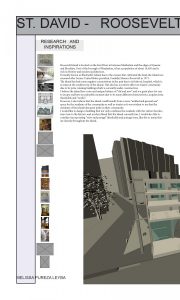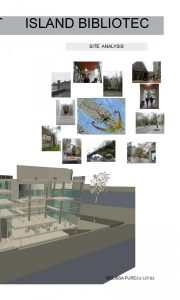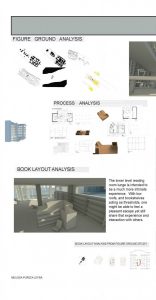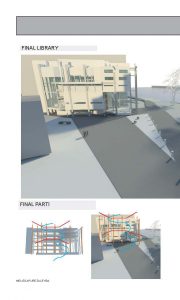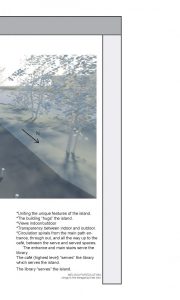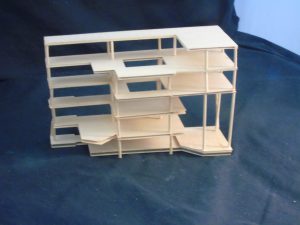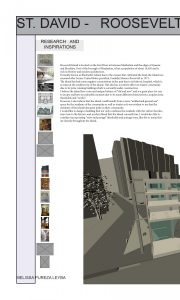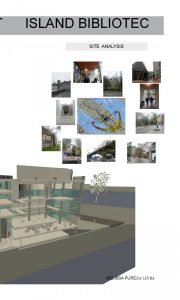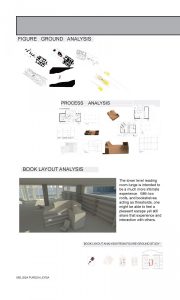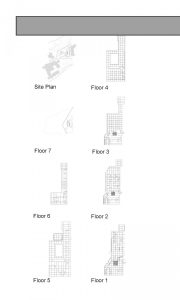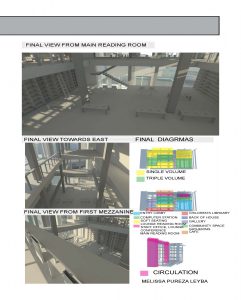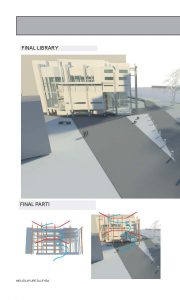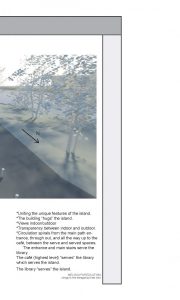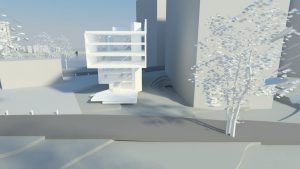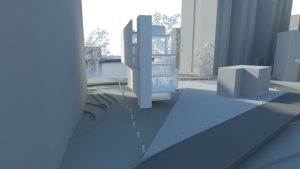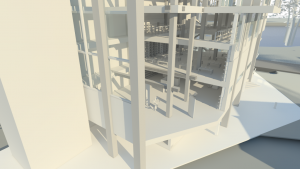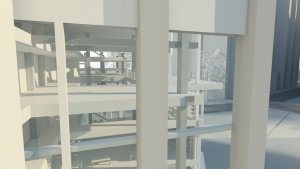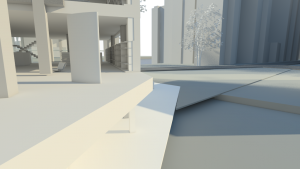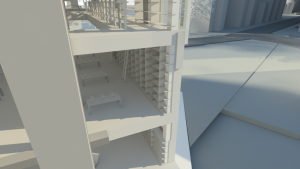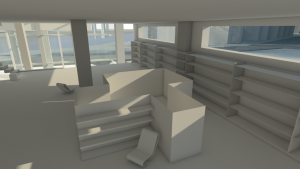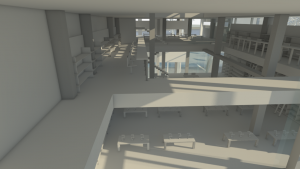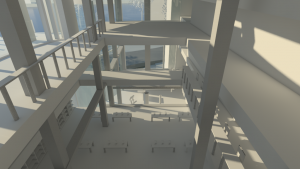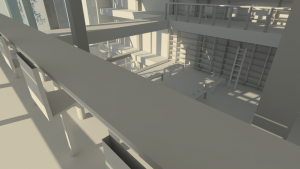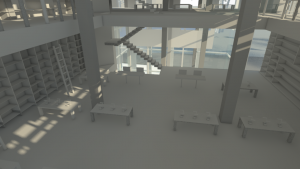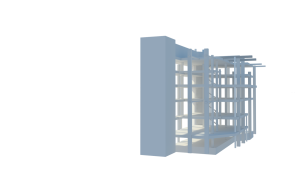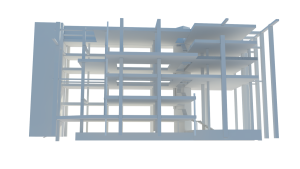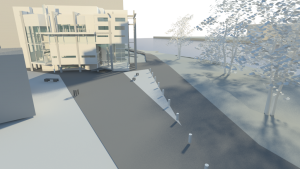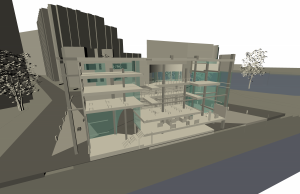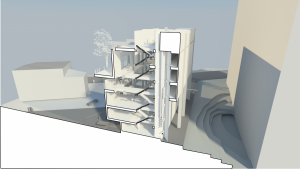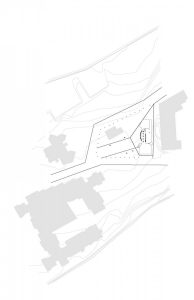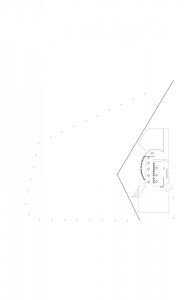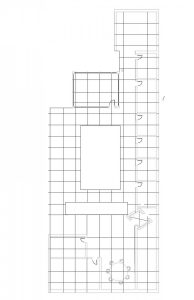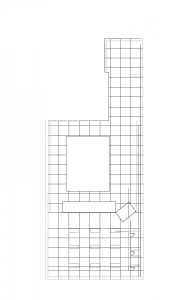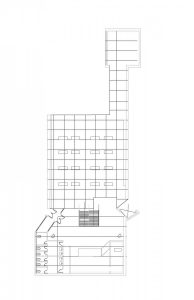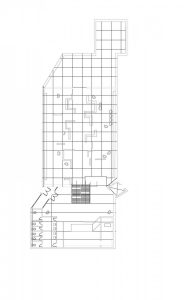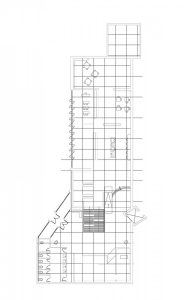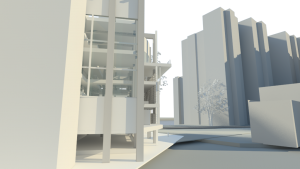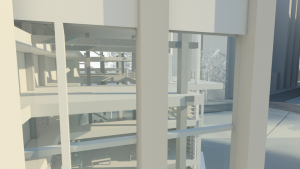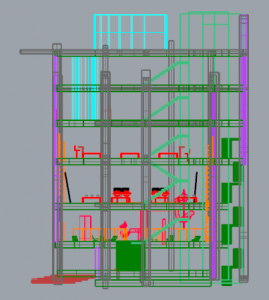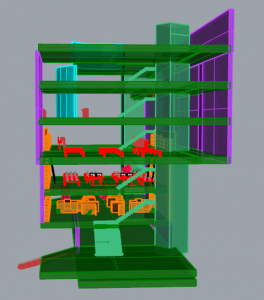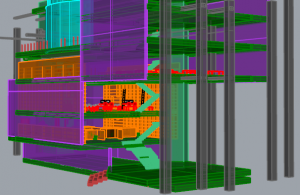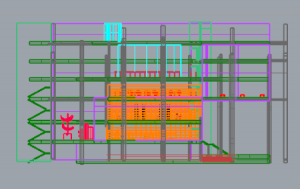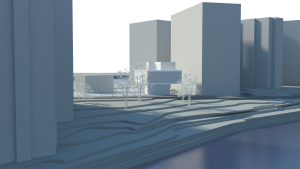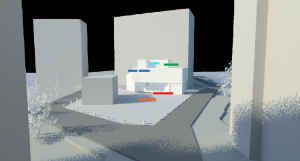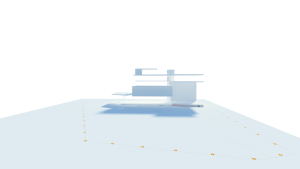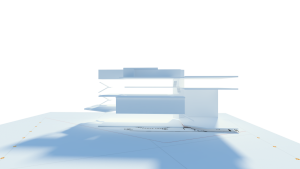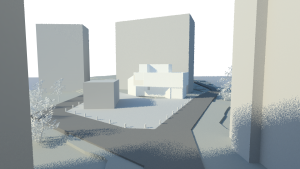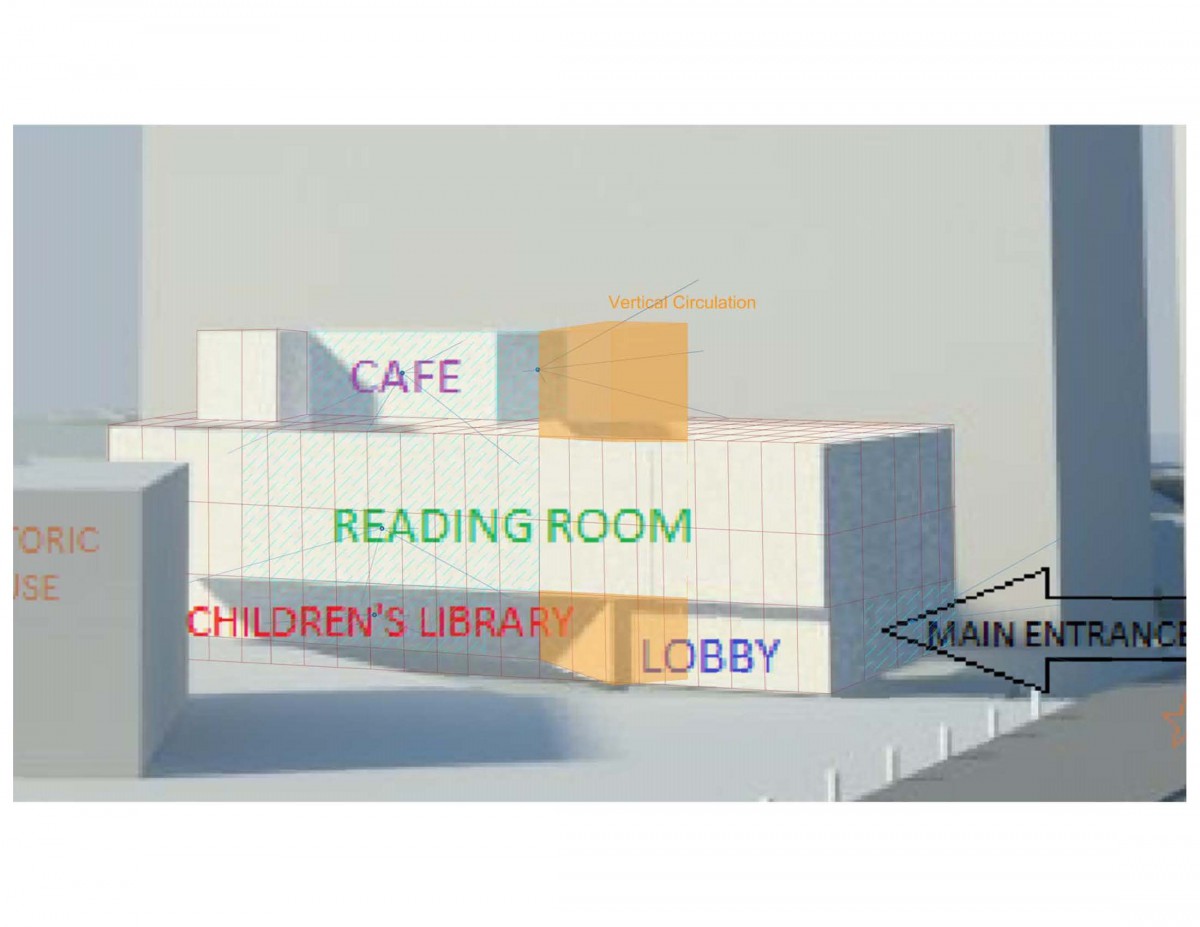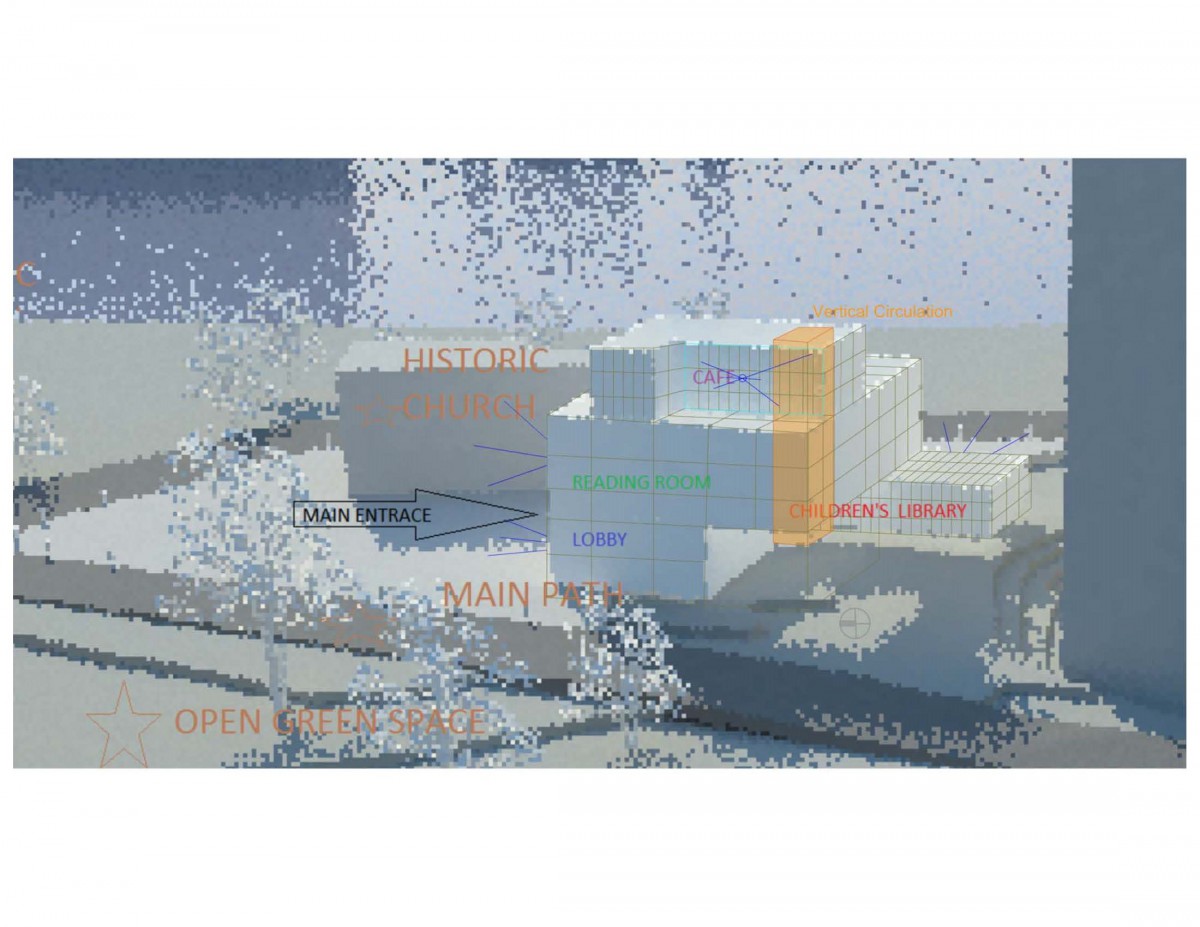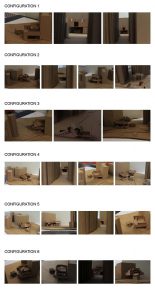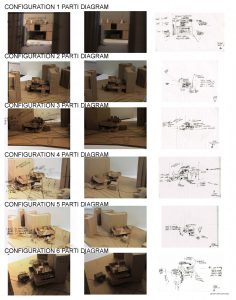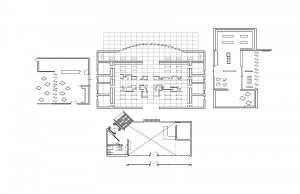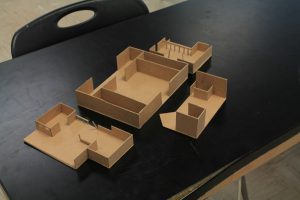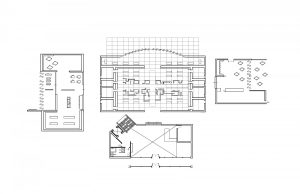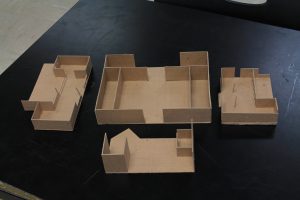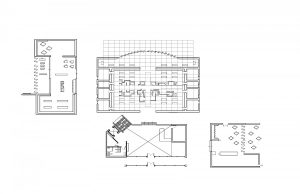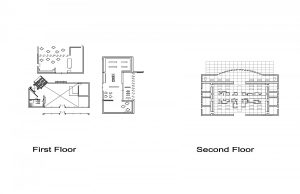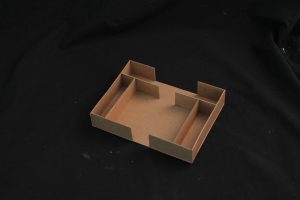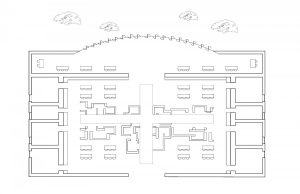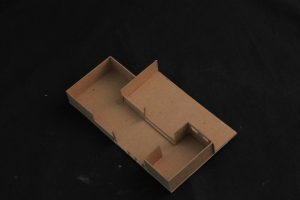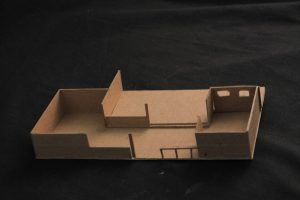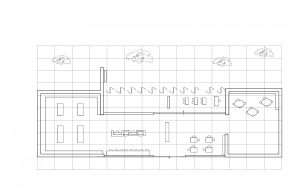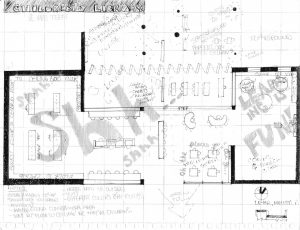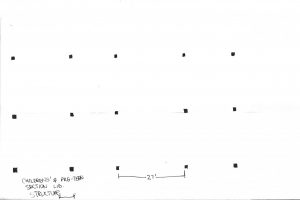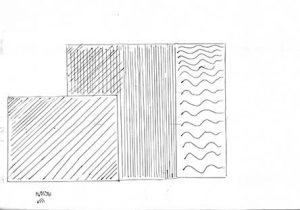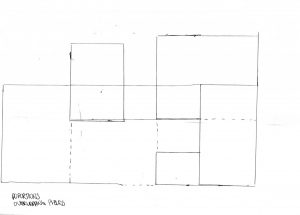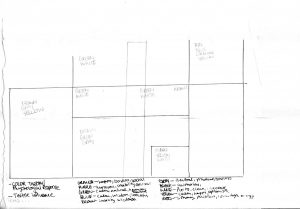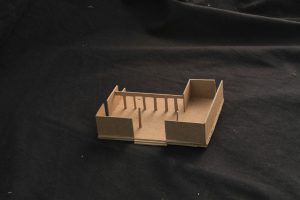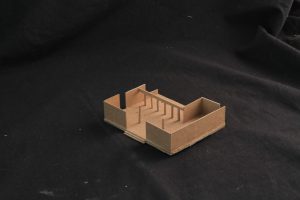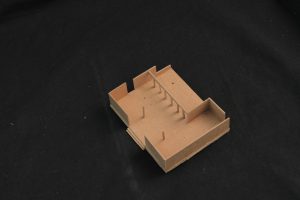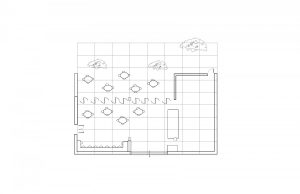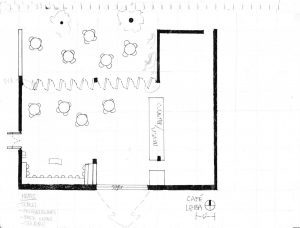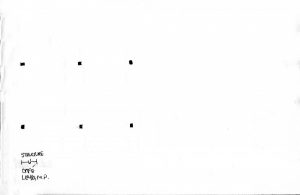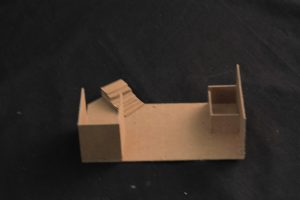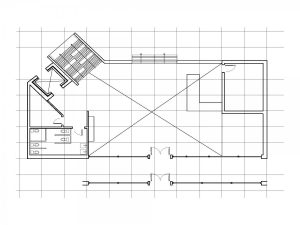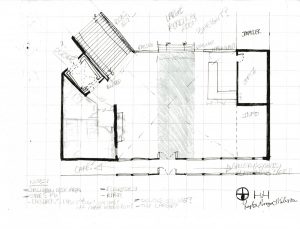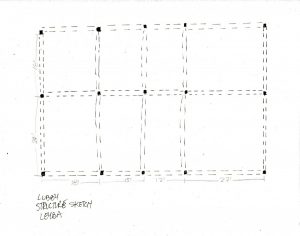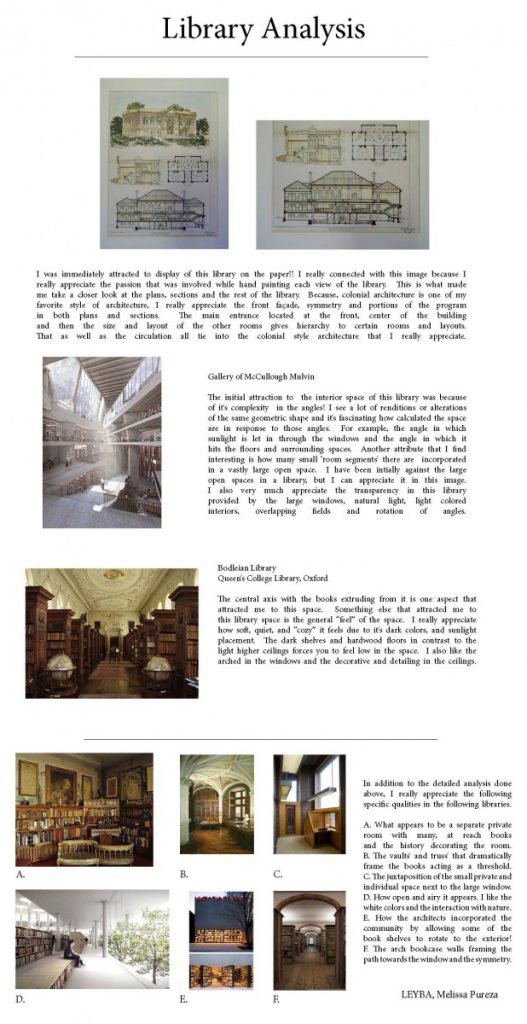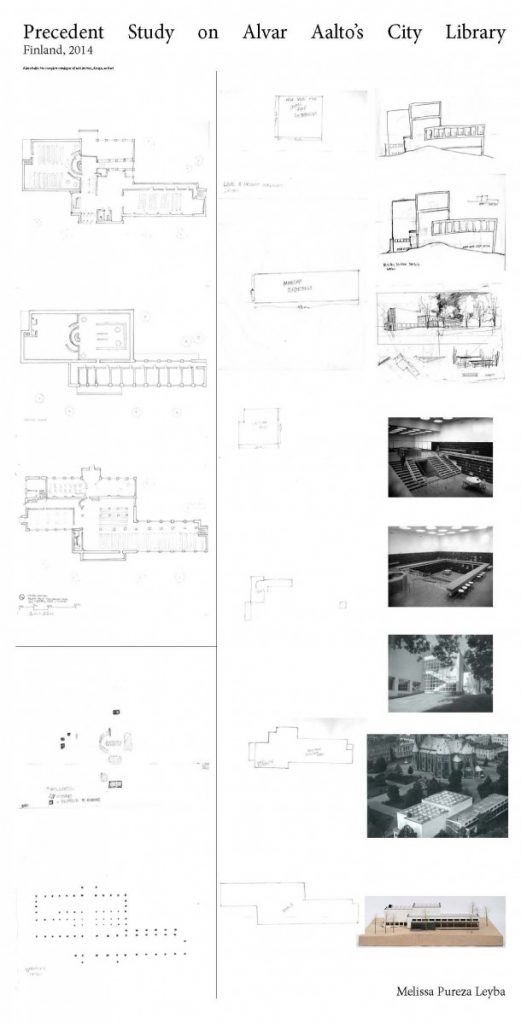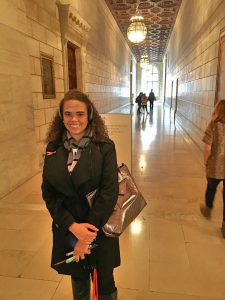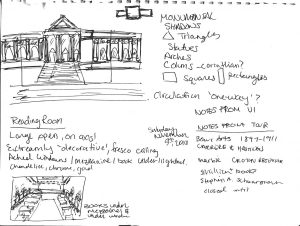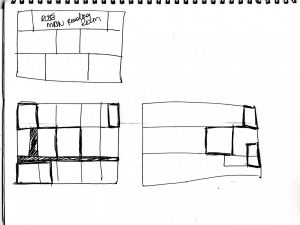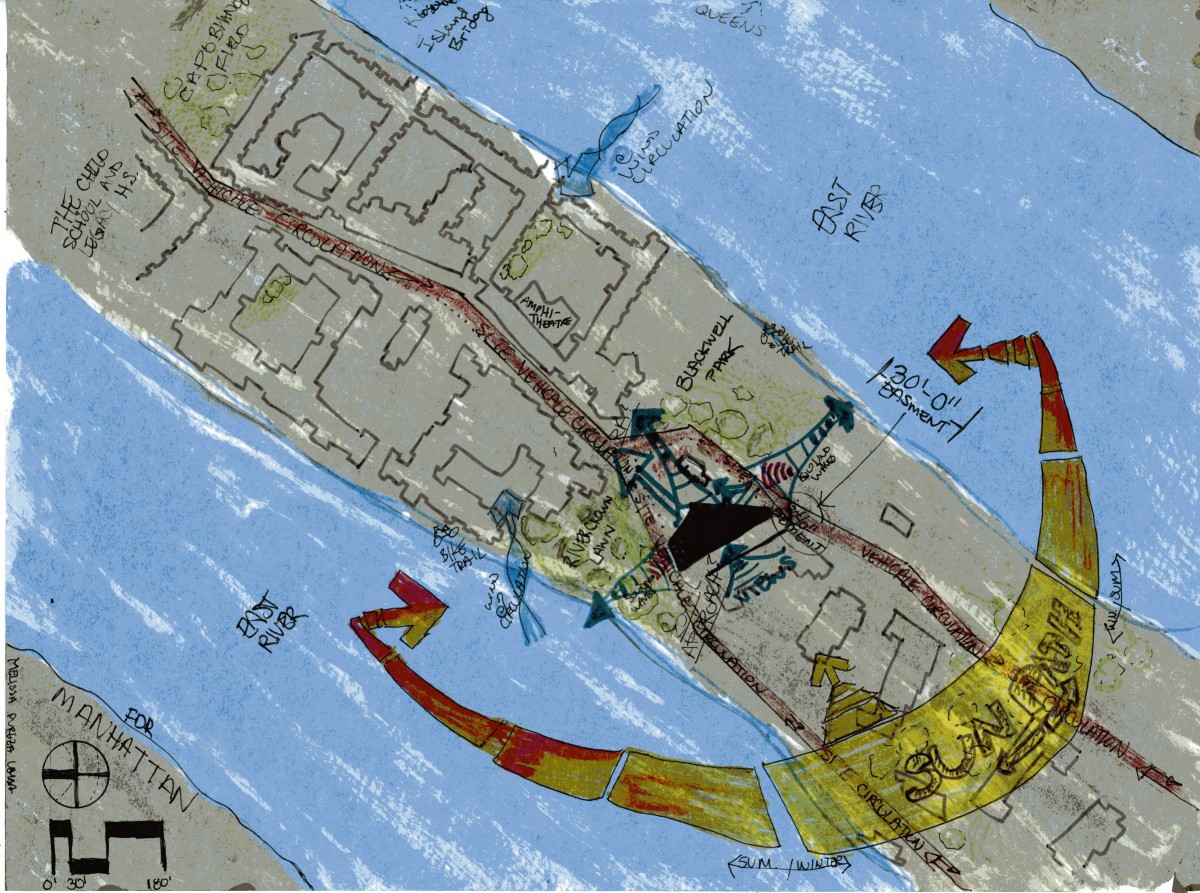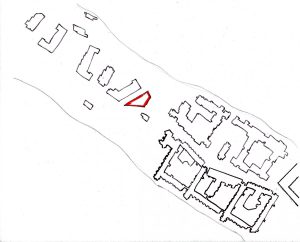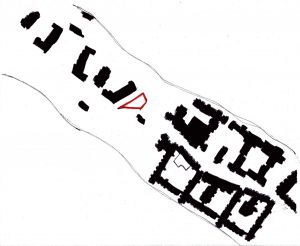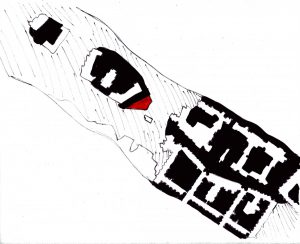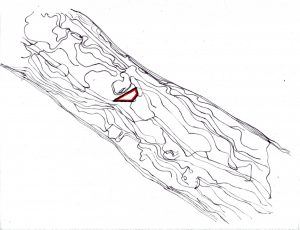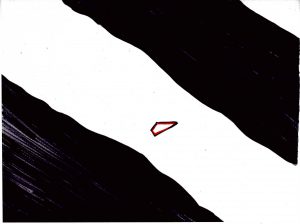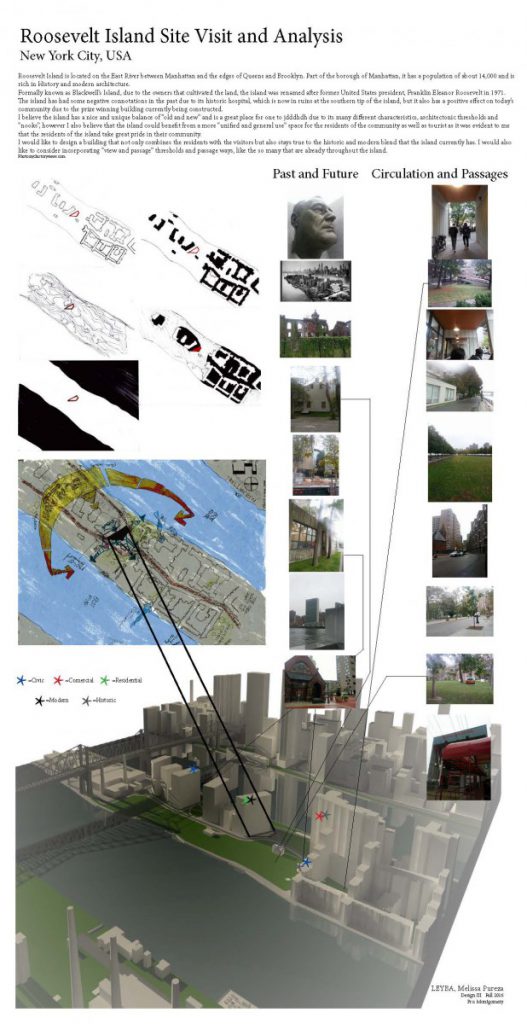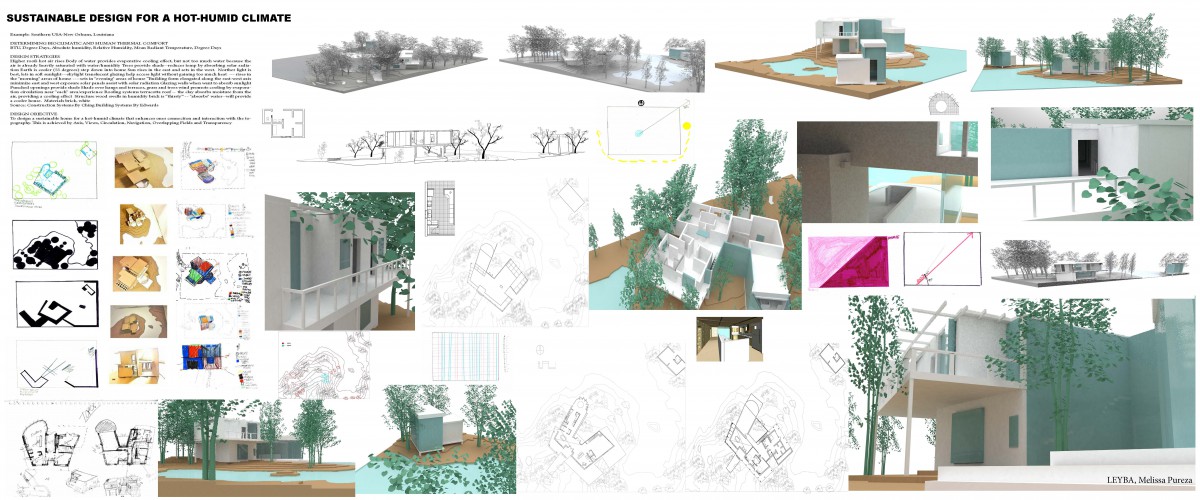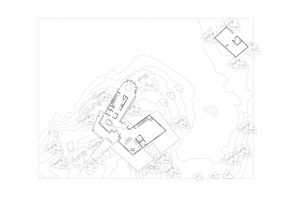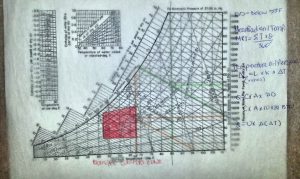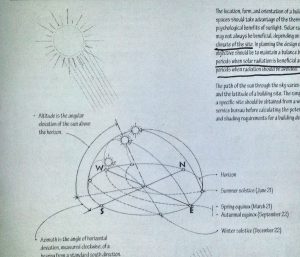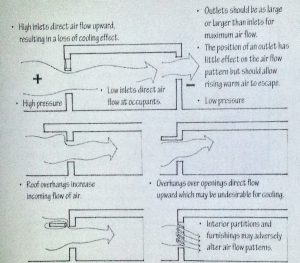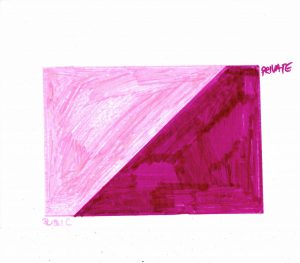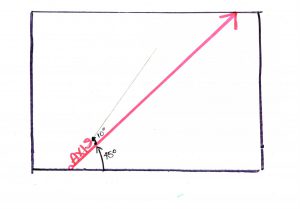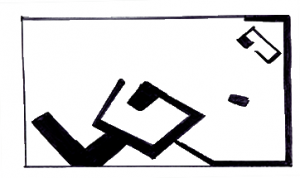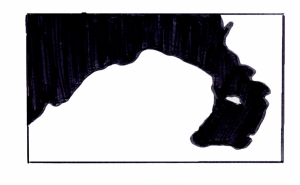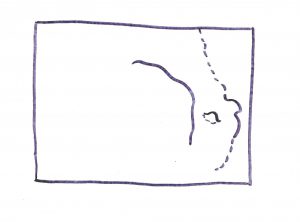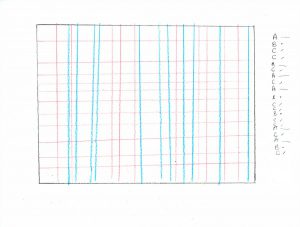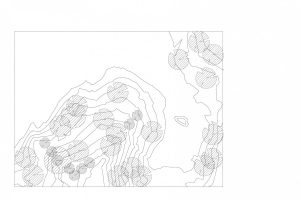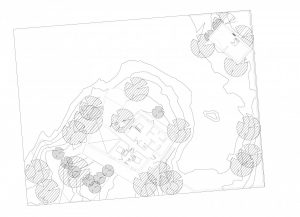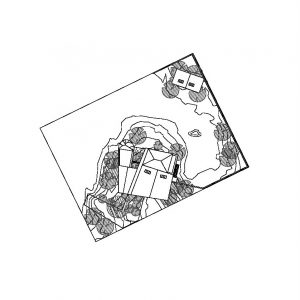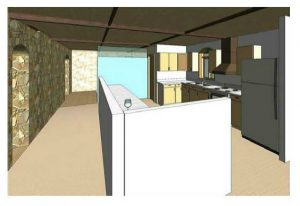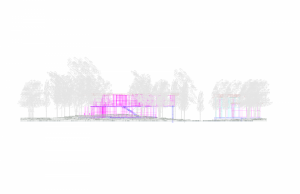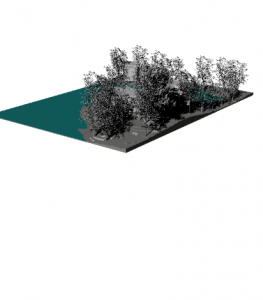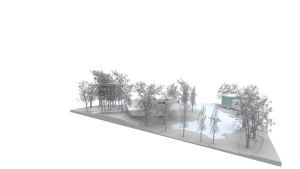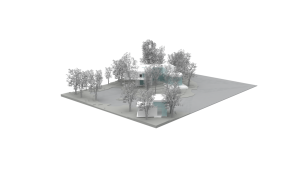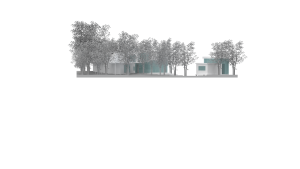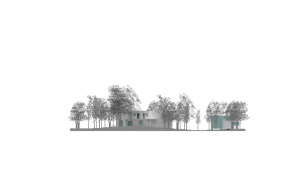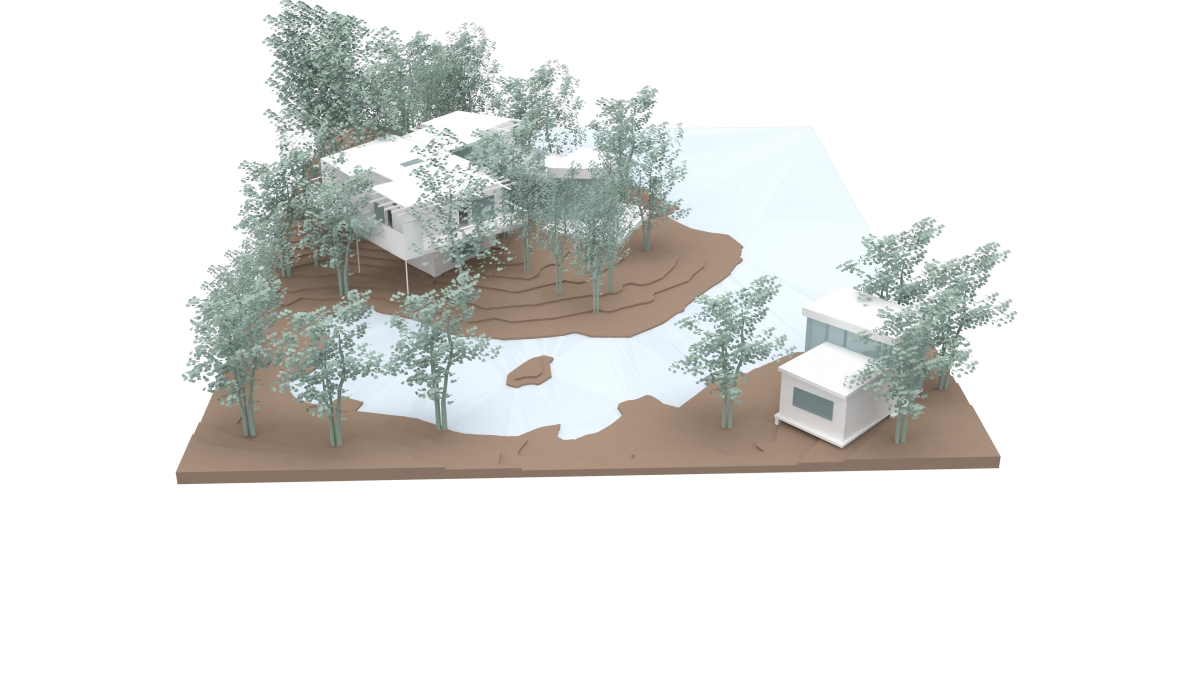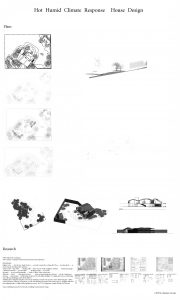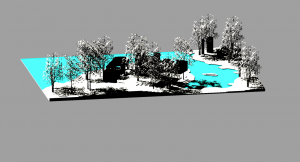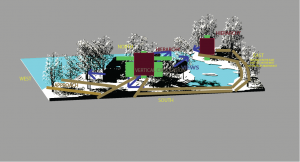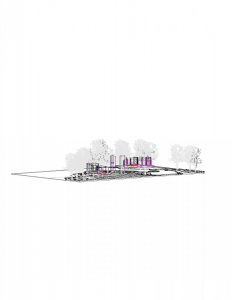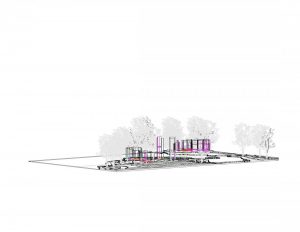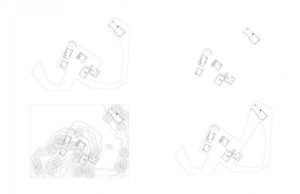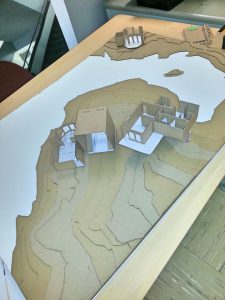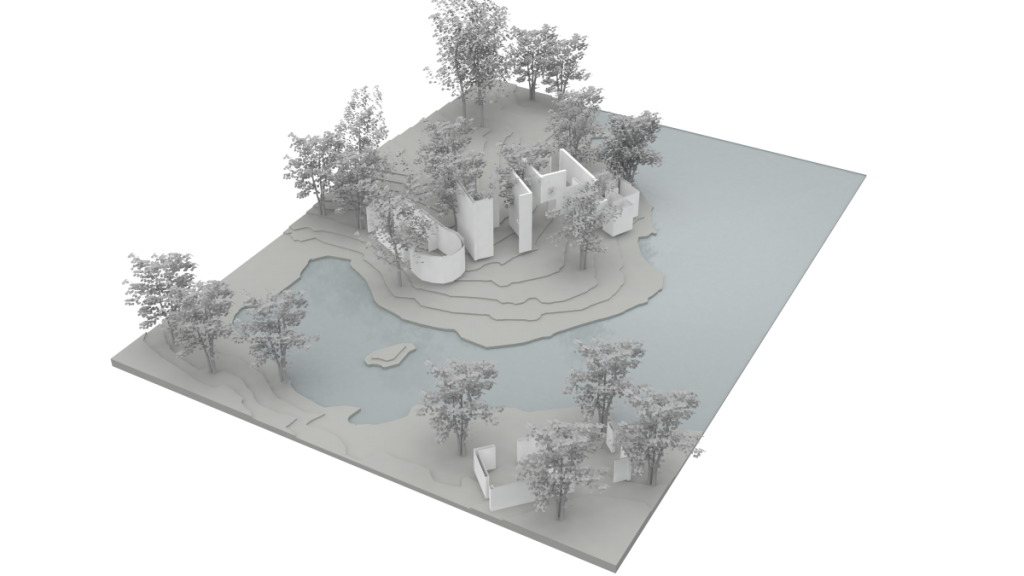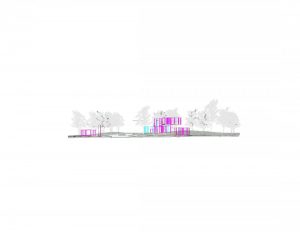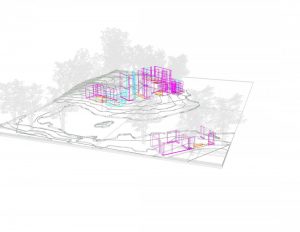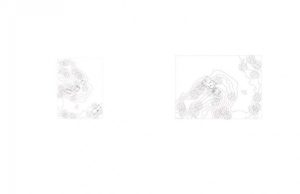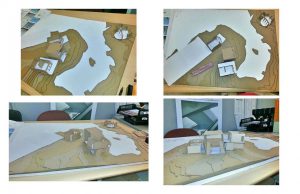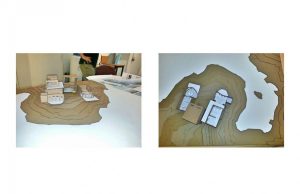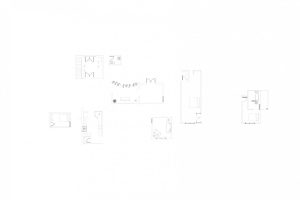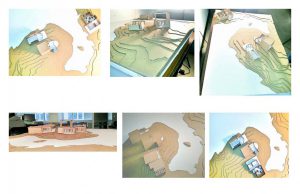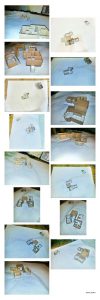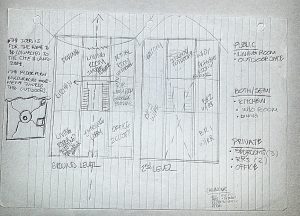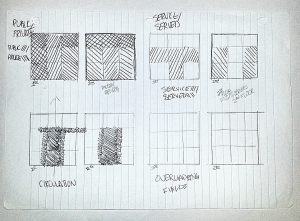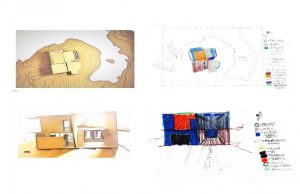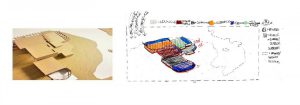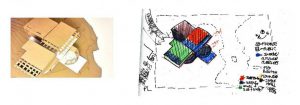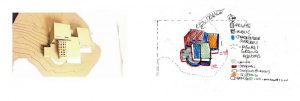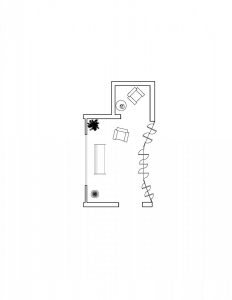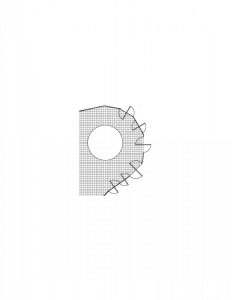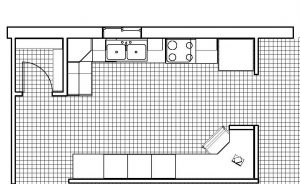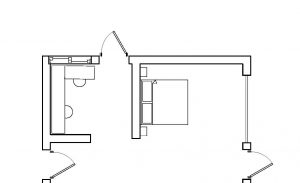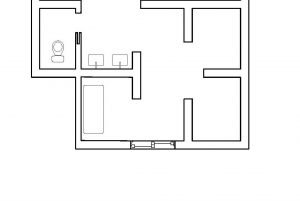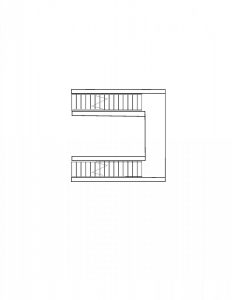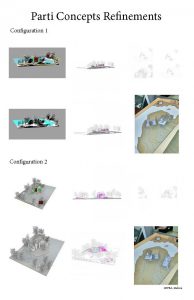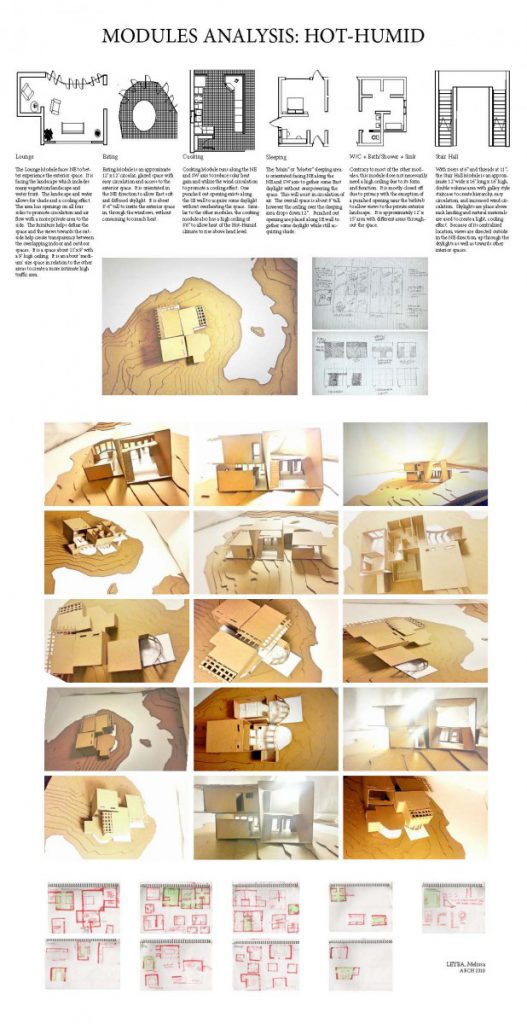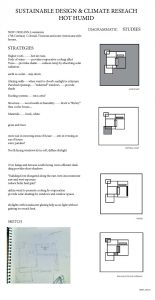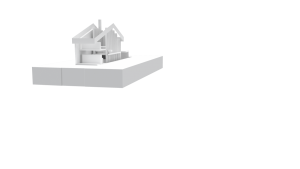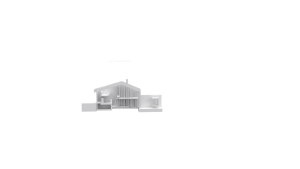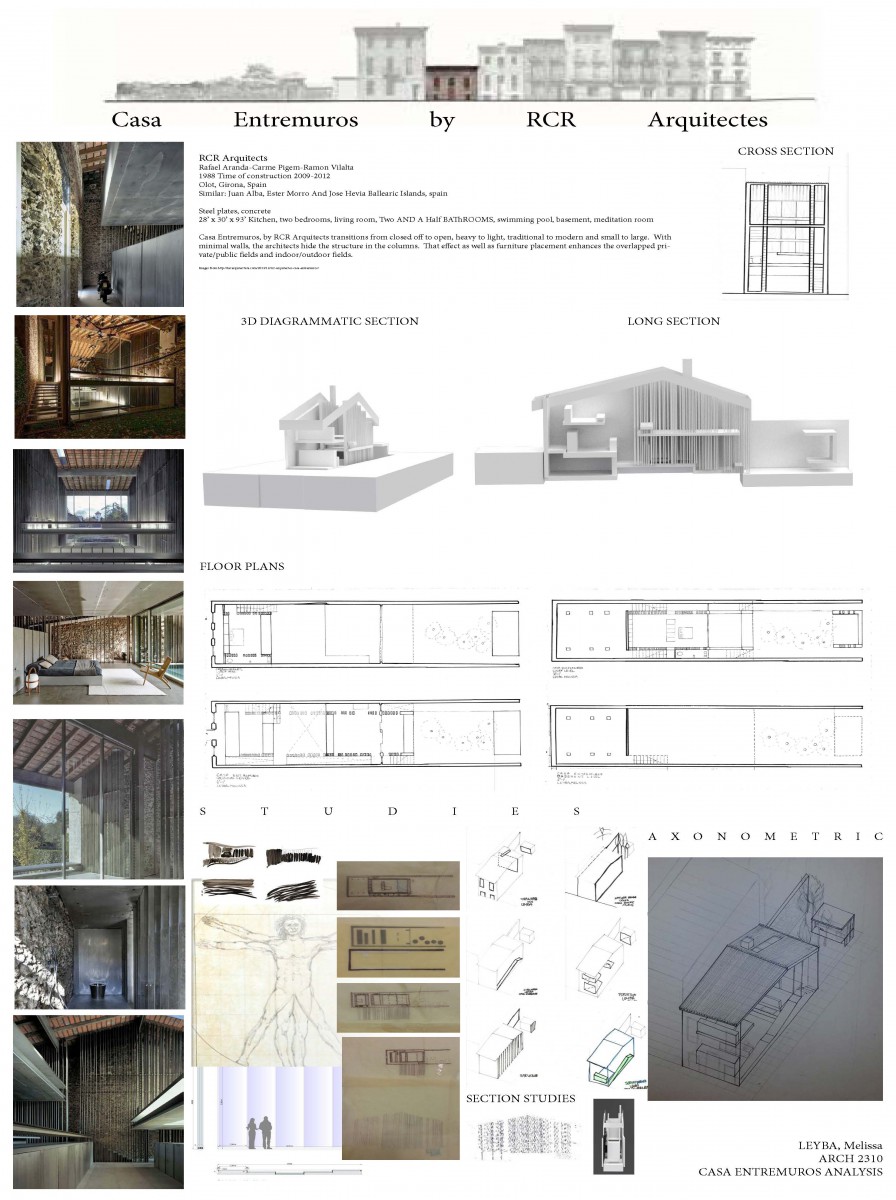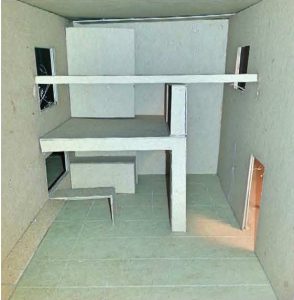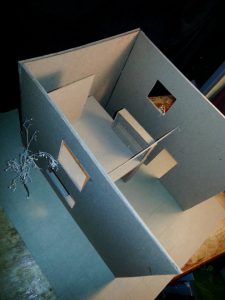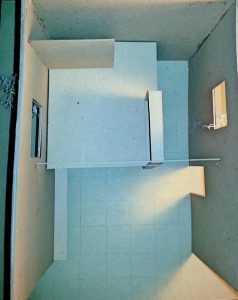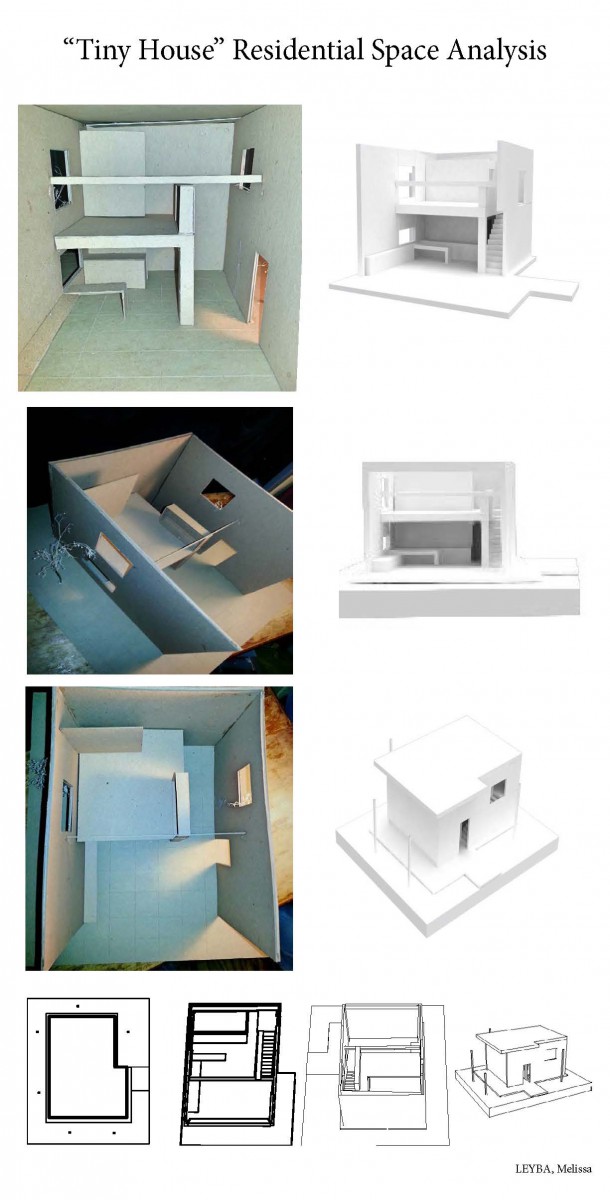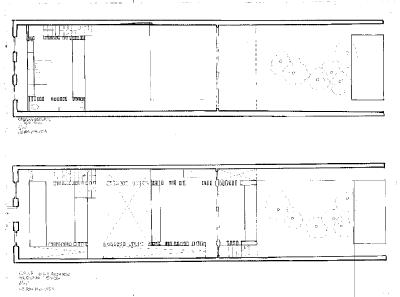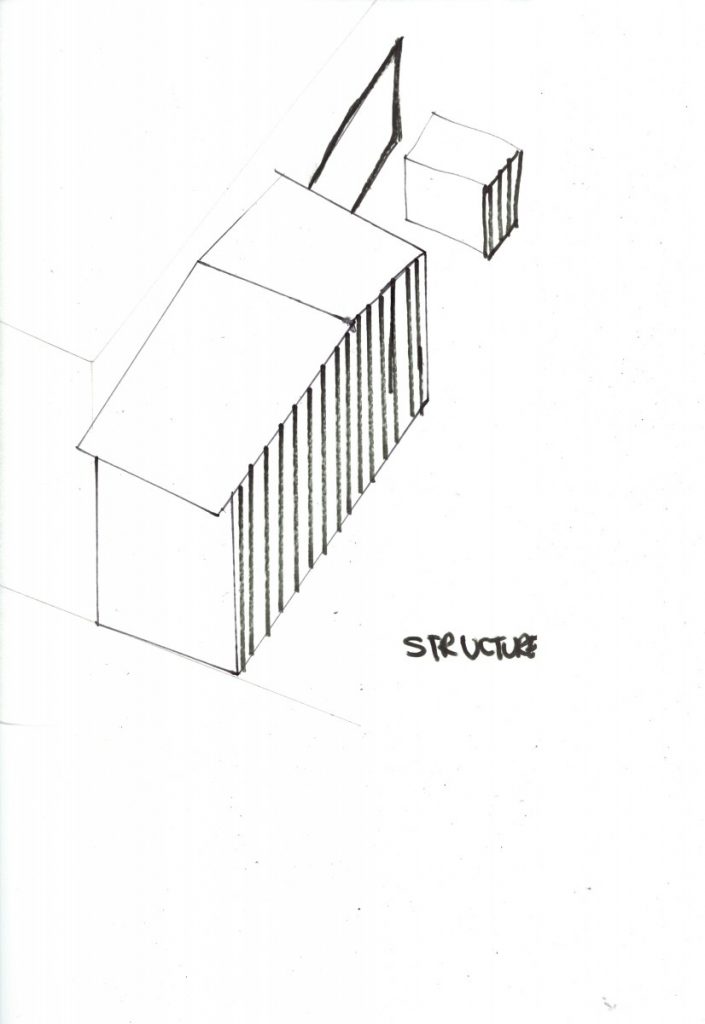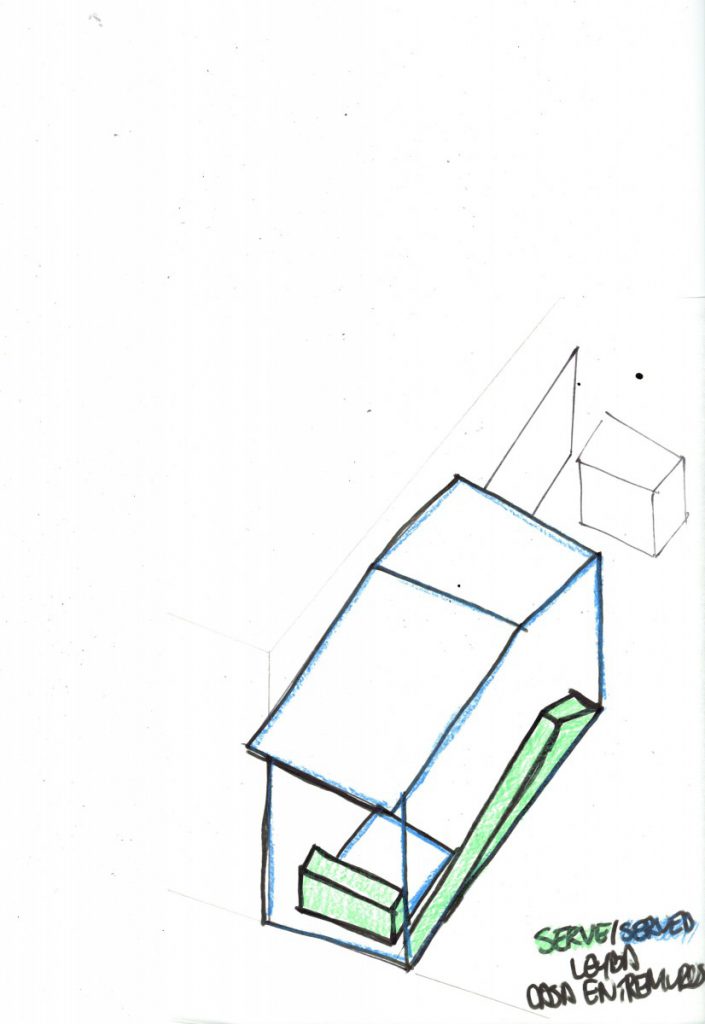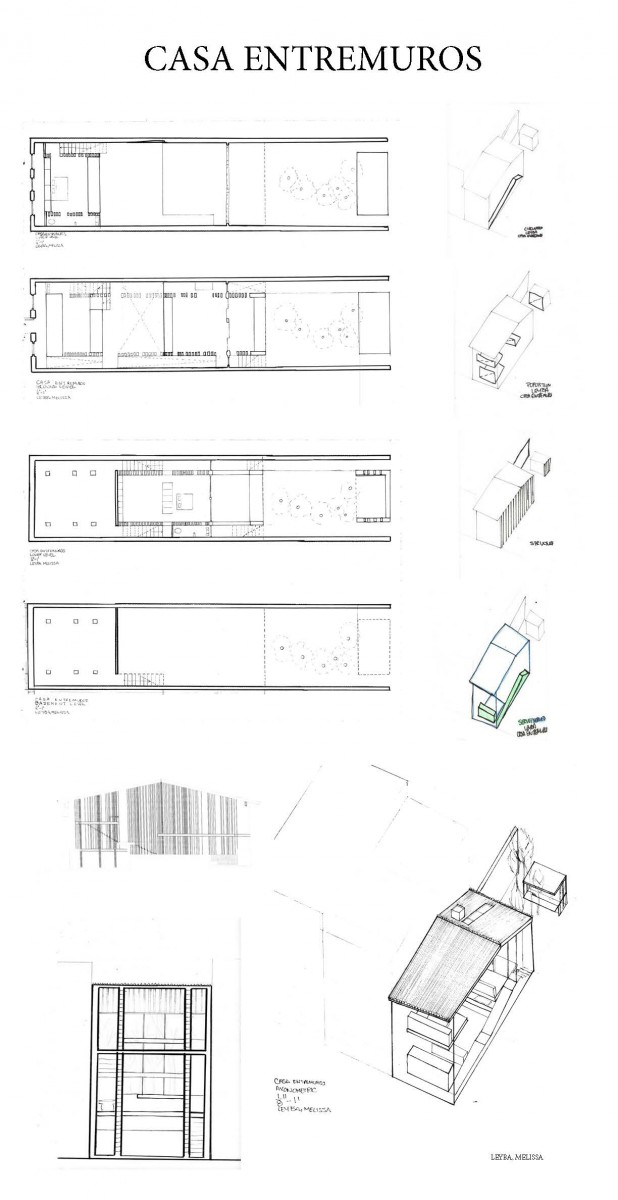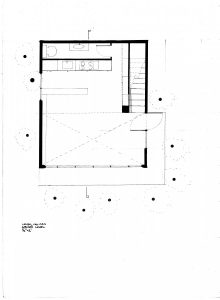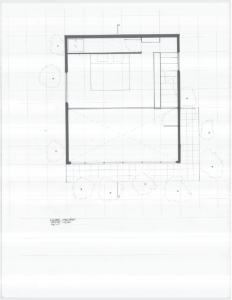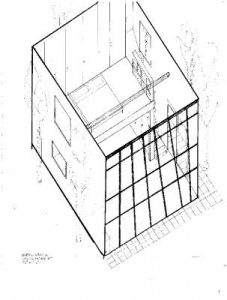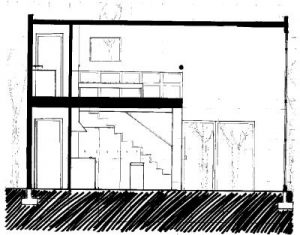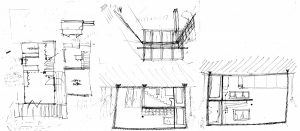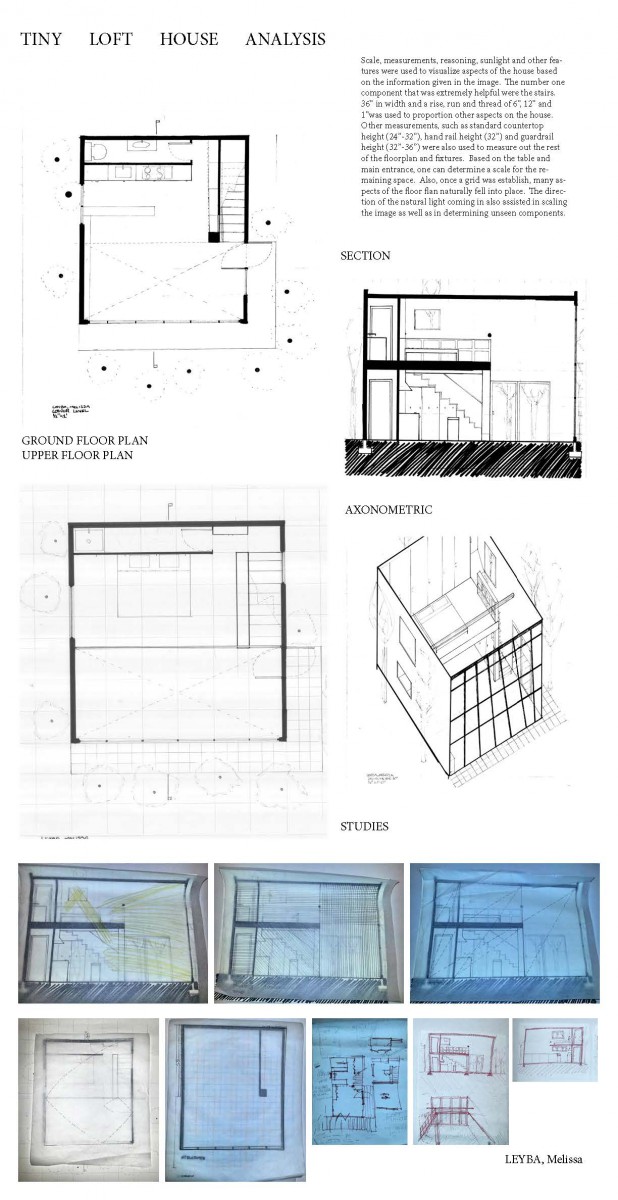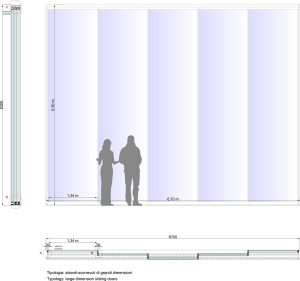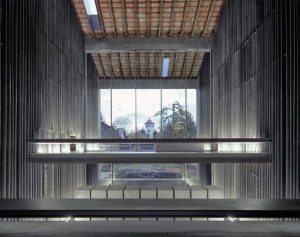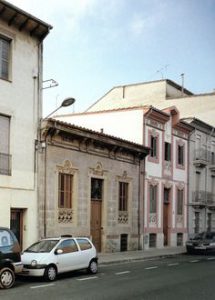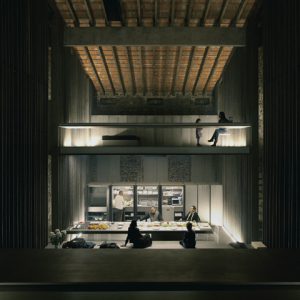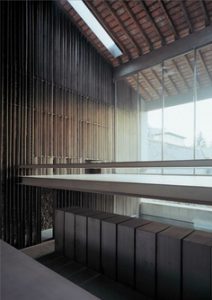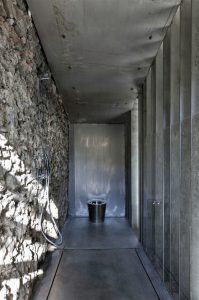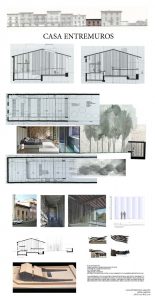Assignment Z
Assignment Y
Assignment V
Assignment U
Site Plan
Floor 7
Floor 6
Floor 5
Floor 4
Floor 3
Floor 2
Floor 1
Assignment T
Assignment S
Assignment R
Configuration 1 has views towards Manhattan, East River, open green space, main roads and historic buildings from the Café which is located on the highest floor. It has views towards the open green space and main road from the lobby and view towards the open green space, main roads and historic buildings from the reading room as well as partially from the children’s library. The Main entrance is located on the East facing façade with vertical circulation along the North façade. A general structural grid is investigated over the overall envelope of the configuration.
Configuration 2 has views towards Manhattan, East River, open green space, main roads and historic buildings from the Café which is located on the highest floor. It has views towards the main roads and historic buildings from the both the lobby and reading room as well as views towards the opposite side of the East River from the children’s library. The Main entrance is located along the North façade, off the main road with vertical circulation along the back of the building. Studies of major and minor grids help create exterior areas as spaces.
Narrowed Down 6 Configurations
Prior Configuration Studies
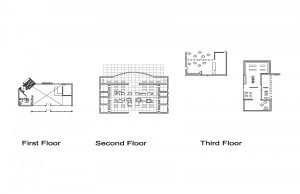
Assignment P
1. Reading Room with Book Collection
The reading room is a large rectangular area with a central axis down the center both vertically and horizontally. It has a central axis towards the outside with an indoor/outdoor overlapping area at the end. It has 24, three people seating and rooms along the sides for group meetings or classrooms. The classrooms are 12’ tall ranging between 12’ and 18’ wide. Books are stored along the side walls, back wall and along the circulation axis. The main reading room is probably going to be a triple volume area and the indoor/outdoor will probably be a double volume area. A 6’ by 6’ grid is used to assist in the placement of the beams and columns. Natural light is let in through the indoor/outdoor area and windows in the rooms.
2. Children’s (&Pre-Teen) Library
Structural Columns
Noise
Proportions and Overlapping Fields
Color/Text Theory
The children’s module serves for both children and pre-teens. It is a large, multi-function, generally rectangular space with columns along the long side after 18′, 30′, 27 and 24’ and columns along the short side after 24’ and 24’. It has two level changes. One upon entering the main space and the other upon transitioning to the overlapping indoor/outdoor spaces.
It is accessed through the steps from the adjacent space and has various interior and exterior subdivision spaces. Upon entering the space, there is a series of individual reading desks and cubicles with views to the adjacent spaces, followed by the area for books along the SW. The right side of the space is divided into a “Learning is Fun” area, small groups area as well as a “Mommy and Me” area which has a lowered ceiling for to create intimacy. The far back of the space, located along the NW facade, is divided up into a lounge area where children can access books and read them there and a small “classroom styled” area. Both of which are stepped up from the rest of the area and overlap into the outdoor spaces. Shaded lounge, chess tables, benches, community reading racks and a small playground are specifically arranged outside the Children’s library.
3. Café Module
Structural Columns
The main exterior entrance is along the South side of the space. Upon entering, individual stool style seating followed by interior access to adjacent room with display counter and register at the far back and an area for small kitchen behind. A service exit is placed at the rear of kitchen. Small group seating both indoor and outdoor are placed along the north façade. Structural columns are placed along the long side after 24 feet then 18 feet the 18 more feet and along the short side after 12 feet then after 30 feet. The space has views to the outdoors through a North facing glazed wall.
4. Two Story Lobby
On a 6’x 6’ grid, columns are placed along the shorter side after 24’ and then 18’ and on the long side after 18 feet, 15 feet 12 feet and 27’. Columns are used to emphasize the main entrance and path to the reading room which is multiple volumes in height. The center space of the lobby, which covers the main entrance and path, the ‘L’ shaped circulation desk, the view to reading room and the stairs is at a double volume space. However, the foyer, office, information area and restrooms are at a single volume height. The reading room is 3 steps down, directly across the main entrance. Restrooms are place near the stairs and elevators, behind a sitting wall. Elevator and Large straight (L Shape) run stairs “extruding into” lobby from top left corner and norther light comes in from main entrance which is encrypted in a glazing envelope.
Assignment O
Assignment N.2
New York Public Library Analysis
Assignment N
In my hand painted Site Analysis Diagram I show:
-Sun Path for both summer and winter
-Street Path with dots representing the change
-Views from given site and other buildings
-Noise circulation from street path
-Wind circulation from the East River
-Significant buildings
-Textured Grass areas
-Scale and North Arrow
In my Figure Ground studies, I show:
-The shape and contrast of some of the buildings.
-Figure Ground Reversal defining the importance of the “open” , ” negative” spaces.
-Contour lines representing topographic change in elevation throughout the site
-The relation of our given building site, to the Island, to the River
PINUP
Assignment M
Final Presentation for A Sustainable Design for a Hot-Humid Climate based on all previous comments, studies, research, practice and findings!
Assignment L
Final Presentation for A Sustainable Design for a Hot-Humid Climate based on all previous comments, studies, research, practice and findings!
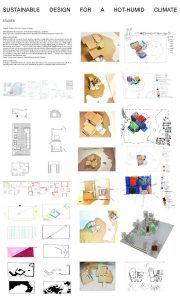 sheet2 unloadable sheet3 ubloadable
sheet2 unloadable sheet3 ubloadable
Final Floor Plans
Assignment J and K
A SUSTAINABLE DESIGN house in relation to it’s given topography at a specific climate. The climate that I chose was HOT-HUMID, which NORTH pointed up.
Human comfort and architectonic techniques were researched in Construction Systems by Ching, Building’s Systems by Dr. Edwards module studies as well as other means.
I found that higher roof, trees, steps downward, overhangs and terraces and orientated east to west all helped better achieve human comfort in a Hot-Humid climate.
In addition to that, there were two main points I chose to focus on. 1) The separation of PUBLIC AND PRIVATE and 2) the INTEGRATION AND OVERLAPS OF INDOOR AND OUTDOOR SPACES.
The house is a large, five sleeping areas, a kitchen, a formal and informal eating and lounge.
In order to separate public and private, I used:
-a clear axis down the site
-tree and angle alignment down the site
-level separation and
-garden walls
As far as the integration of the house to the site, I first did a series of figure ground studies in which I found a grid and unique elements in the topography.
The design idea is to not just use the land as views but to also be invited onto the land and vice versa in given areas because although it is a hot-humid climate, there will be times when there will be a nice breeze or fresh rain.
I developed a series of overlapping indoor/outdoor fields by using the balcony, overhang, skylight and transparency. The house starts of straight and then opens up at the courtyard to let the landscape into the house.
There was some hesitation to the thick exterior garden wall because I didn’t want to over work the landscape but I decided to leave it because I believed it not only provided shade from the south but also acted as a connection.
Site

First Floor
Second Floor
Roof
Interior Views
Tree and Topography Studies
Front Entrance
Back (From Studio Entrance)
Tools used where Rhino, AutoCad, Revit and hand drafting.
Assignment H and I
Top Two Investigated Configurations
1.
Module Rhino Diagrams
Module Rhino Sections
Module Rhino Models and Plans
Module Chipboard Models
2.
Module Rhino Diagrams
Module Rhino Sections
Module Rhino Models and Plans
Module Chipboard Models
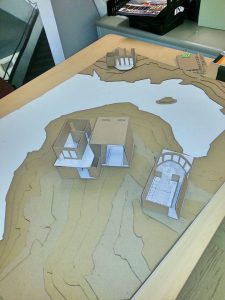
New Configurations
1.
a. (Kitchen facing entrance to site)
b. (main sleeping area moved to second floor)
2. (main sleeping area facing entrance to site)

Module Chipboard Models
3. “U” Shape
Additional/Fixed Module Studies and Practice
Additional Configurations
1. (main sleeping area across site)
2. (straight across)
3. and 4.
Investigations on: “U” shapes–space under main ‘sleeping’ area with sleeping on second floor–irregular shapes–main sleeping area across site–second lounge across site–passage in-between main sleeping area and rest of house, etc.
Configuration 5
Configuration 4
Configuration 3
Configuration 2
Configuration 1
Lounge
The Lounge Module faces NE to better experience the exterior space. It is facing the landscape which includes many vegetation/landscape and water front. The landscape and water allows for shade and a cooling effect. The area has openings on all four sides to promote circulation and air flow with a more private area to the side. The furniture helps define the space and the views towards the outside help create transparency between the overlapping indoor and outdoor spaces. It is a space about 11’x 9′ with a 9′ high ceiling. It is an about ‘medium’ size space in relation to the other areas to create a more intimate high traffic area.
Eating
Eating Module is an approximate 12′ x 12′ circular, glazed space with easy circulation and access to the exterior space. It is orientated in the NE direction to allow East soft and diffused skylight. It is about 8′-6″ tall to invite the exterior space in, through the windows, without consuming too much heat.
Cooking
Cooking Module runs along the NE and SW axis to reduce solar heat gain and utilize the wind circulation to promote a cooling effect. One punched out opening exists along the SE wall to acquire some daylight without overheating the space. Similar to the other modules, the cooking module also has a high ceiling of 8’6″ to allow heat of the Hot-Humid climate to rise above head level.
Sleeping
The “Main” or “Master” sleeping area is orientated facing NE along the NE and SW axis to gather some East daylight without overpowering the space. This will assist in circulation of air. The overall space is about 8′ tall, however the ceiling over the sleeping area drops down 12″. Punched out opening are placed along SE wall to gather some daylight while still acquiring shade.
W/C + Bath/Shower + Sink
Contrary to most of the other modules, this module dose not necessarily need a high ceiling due to its form and function. It is mostly closed off due to privacy with the exception of a punched opening near the bathtub to allow views to the private exterior landscape. It is approximately 12′ x 15′ area with different areas throughout the space.
Stair Hall
With risers at 6″ and threads at 11″, the Stair Hall Module is an approximate 12′ wide x 16′ long x 16′ high, double volume area with galley style staircase to create hierarchy, easy circulation, and increased wind circulation. Skylights are place above each landing and natural materials are used to create a light, cooling effect. Because of its centralized location, views are directed outside in the NE direction, up through the skylights as well as towards other interior spaces.
Module Studies
PINUPS
Assignment G
Topographic AutoCAd site sections were practiced using the generic site by first drawing a line straight across the desired cut plane. Vertical lines were than carried down onto a grid at each level change. The below mentioned grid is set up with specified level increases in order to determine the specific level changes at specific locations.
PINUP
Assignment F
To better understand the climate research in relation to the Hot-Humid climate, a specific location was chosen. Climatic response design techniques such as solar heat gain/loss, windows, materials, roofing systems in a hot-humid climate such as New Orleans, Louisiana was investigated and specific architectonic programs in relation to specific program type was practiced.
RESEARCH NOTES
Source: Building Systems by Dr. Edwards and Reading Construction by Ching
Higher roofs——-hot air rises.
Body of water——provides evaporative cooling effect, but not too much water because the air is already heavily saturated with water/humidity.
Trees—-provides shade—–reduces temp by absorbing solar radiation.
Earth is cooler—step down into home
Glazing walls—-when want to absorb sunlight
Sun rises in the east and sets in the west. Norther light is best to achieve human thermal comfort.
Punched openings—-provide shade
Roofing systems—– terracotta roofs—the clay absorbs moisture from the air, providing a cooling effect.
Structure—–wood swells in humidity——brick is “thirsty” thus will provide a cooler house….
Materials.—–brick, white
grass and trees
more sun in morning areas of house —-sets in evening areas of house
solar panels assist with solar radiation
North facing windows let in soft, diffuse skylight
Over hangs and terraces facing south provide more efficient shading and shorter shadows
“Building form elongated along the east-west axis minimize east and west exposure
reduce solar heat gain”
utilize wind to promote cooling by evaporation
provide solar shading for windows and outdoor spaces
skylights with translucent glazing help access light without gaining too much heat.
PINUP
Assignment E
Final presentation of researched house, Casa Entremuros by RCR Arquitectes, includes the house’s context, rhino models, sections, floor plans, axon, diagrams, studies, sketches and images of the house.
PINUP
Assignment D
The first photo of the Card Model built at 1/2″=1′ scale shows light coming in through the main door at the right, the importance of the railing placement on the second floor as well as the different proportions throughout the house.
Second photo of Card Model shows relationship of indoor space to outdoor space.
In the third photo, the similarity of geometry is visible as well lighting coming in from the windows and door.
PINUP
Assignment C
When completing plans of researched house, CASA ENTREMUROS, further analysis was needed. During research two plans of said house was found however because the house had multiple changes in level a separation of each level was needed. The entrance to the house is located on ‘ground floor’ however circulation at the sides of the house allows for entrance to the main bedroom located a ‘level’ lower and then a private basement a further lower level. From the ground floor, circulation is accessed to the second bedroom above the kitchen and the living room above the main bedroom.
Visible in my two diagrams below, circulation is ‘hidden’ behind the structure of the house through a series of stairs and ramps.
Sections of the house were also analyzed to process the structure as well as ‘plates’ of the different floors. In the axon analysis, proportion and indoor/outdoor relations were further investigated.
PINUP
Assignment B
‘TINY HOUSE’ LOFT ANALYSIS
The image, 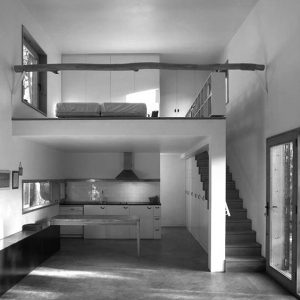 was chosen from pinterest board, https://www.pinterest.com/jason0888/interiors/, because of it’s simplistic architectural elements, similar rectangular shapes as well as ample information viewed.
was chosen from pinterest board, https://www.pinterest.com/jason0888/interiors/, because of it’s simplistic architectural elements, similar rectangular shapes as well as ample information viewed.
Scale, measurements, reasoning, sunlight and other features were used to visualize aspects of the house based on the information given in the image. The number one component that was extremely helpful were the stairs. 36” in width and a rise, run and thread of 6”, 12” and 1”was used to proportion other aspects on the house. Other measurements, such as standard countertop height (24”-32”), hand rail height (32”) and guardrail height (32”-36”) were also used to measure out the rest of the floorplan and fixtures. Based on the table and main entrance, one can determine a scale for the remaining space. Also, once a grid was establish, many aspects of the floor flan naturally fell into place. The direction of the natural light coming in also assisted in scaling the image as well as in determining unseen components.
PINUP
Assignment A
CASA ENTREMUROS
This house was chosen and researched from the library because of it’s intriguing structural elements, historical preservation of front façade as well as it’s enclosed/open juxtaposition through out the house and cite.
RCR Arquitects: Rafael Aranda-Carme Pigem-Ramon Vilalta
Olot, Girona, Spain 1988
Time of reconstruction 2009-2012
(Similar: Juan Alba, Ester Morro And Jose Hevia Ballearic Islands, Spain)
Steel plates, concrete
28’ x 30’ x 93’ (Converted from Metros)
Kitchen, two bedrooms, living room, Two and a Half bathrooms, swimming pool, basement, meditation room
Casa Entremuros, by RCR Arquitects transitions from closed off to open, heavy to light, traditional to modern and small to large. With minimal walls, the architects hide the structure in the columns. That effect as well as furniture placement enhances the overlapped private/public fields and indoor/outdoor fields.
Images from http://hicarquitectura.com/2013/12/rcr-arquitectes-casa-entremuros/
PINUP
